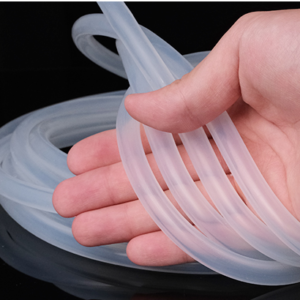Manufacturers take several measures to ensure the quality and compliance of food-grade silicone hoses with stringent food safety regulations:
- Use of FDA-Compliant Materials: Employing silicone compounds and additives that comply with the regulations set by food safety authorities like the U.S. Food and Drug Administration (FDA) or equivalent agencies in other regions. These materials are specifically formulated for safe contact with food.
- Adherence to Standards: Ensuring that the manufacturing process aligns with industry-specific standards and certifications, such as NSF/ANSI standards, 3-A Sanitary Standards, or EU regulations like EC1935/2004, which define the materials suitable for food contact.
- Traceability and Documentation: Maintaining detailed records of the materials used, manufacturing processes, and quality control measures. This ensures traceability and allows for swift identification and resolution of any non-compliance issues.
- Comprehensive Testing: Conducting rigorous testing and analysis of the hoses to verify their compliance with food safety regulations. This includes tests for extractables, leachables, migration of substances, and overall chemical compatibility with food substances.
- Material Certifications: Obtaining certifications or declarations of compliance from reputable testing laboratories or certification bodies that validate the suitability of the hoses for food contact.
- Quality Control Checks: Implementing stringent quality control checks throughout the manufacturing process to ensure that the hoses meet the required standards for hygiene, purity, and safety.
- Cleanroom Production Facilities: Manufacturing food-grade silicone hoses in controlled environments, such as cleanrooms, to prevent contamination during production.
- Regular Audits and Inspections: Undergoing periodic audits and inspections by regulatory bodies or independent organizations to verify compliance with food safety regulations and standards.
- Material Selection and Formulation: Carefully selecting silicone compounds and additives that are specifically designed to resist bacterial growth, withstand cleaning processes, and maintain their properties under food-related conditions.
- Adoption of Good Manufacturing Practices (GMP): Implementing GMP principles to ensure that the entire manufacturing process, from raw material handling to packaging, follows best practices for hygiene and safety.
By integrating these measures into their manufacturing processes, manufacturers can demonstrate and ensure the quality, safety, and compliance of food-grade silicone hoses, meeting the stringent regulations set for materials intended for contact with food and beverages.
How does the flexibility of food-grade silicone hoses impact their installation and connection in complex food processing systems?
The flexibility of food-grade silicone hoses offers several advantages in the installation and connection within complex food processing systems:
- Ease of Handling: The flexibility of food-grade silicone hoses allows for easy handling during installation, especially in systems with intricate layouts or tight spaces. They can be maneuvered around obstacles or machinery more easily than rigid hoses.
- Reduced Kinking: Silicone’s pliability minimizes the risk of kinking or collapsing, ensuring a consistent flow of food products or liquids within the system. food grade silicone hose This is crucial in maintaining operational efficiency and preventing blockages.
- Versatile Routing: Flexible silicone hoses can be routed along complex paths without compromising functionality. They can navigate corners, twists, and turns, adapting to the system’s layout requirements without compromising performance.
- Minimized Fittings: The flexibility allows for longer continuous runs without excessive fittings or connectors. This not only reduces the number of potential leak points but also simplifies the installation process, saving time and effort.
- Enhanced Sealing: Silicone hoses’ flexibility enables a snug fit around connectors, valves, or other components, ensuring better sealing and reducing the likelihood of leaks or contamination.
- Adaptability to Movement: In systems where vibrations or movement are present, flexible silicone hoses can accommodate these motions without risking damage or disconnection, maintaining system integrity and reliability.
- Ease of Maintenance: During maintenance or cleaning, the flexibility of food-grade silicone hoses simplifies access to components, facilitating disconnection and reconnection, which helps in reducing downtime.
- Customization: Food-grade silicone hoses can be easily trimmed or cut to specific lengths without compromising their functionality. This allows for customized installations in various food processing systems.
- Resistance to Fatigue: Silicone’s resilience against repeated bending or flexing ensures that the hoses maintain their structural integrity over time, contributing to prolonged reliability within the system.
- Compatibility with Multiple Connections: The flexibility of food-grade silicone hoses allows compatibility with various types of connectors and fittings, offering versatility in system design and integration.
Overall, the flexibility of food-grade silicone hoses simplifies installation, adapts to complex layouts, and enhances the overall performance and reliability of food processing systems, crucial in maintaining food safety and integrity during processing.
